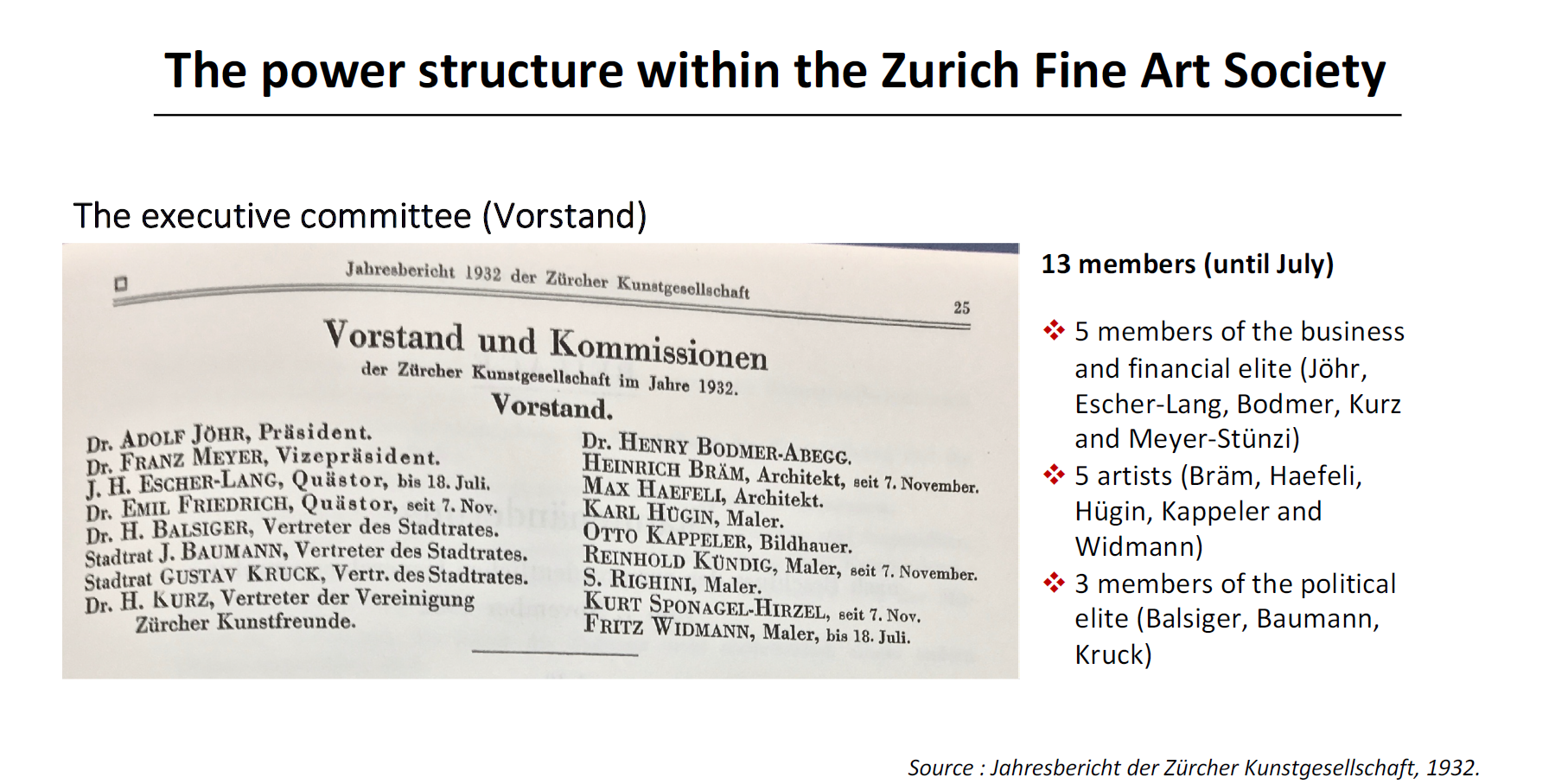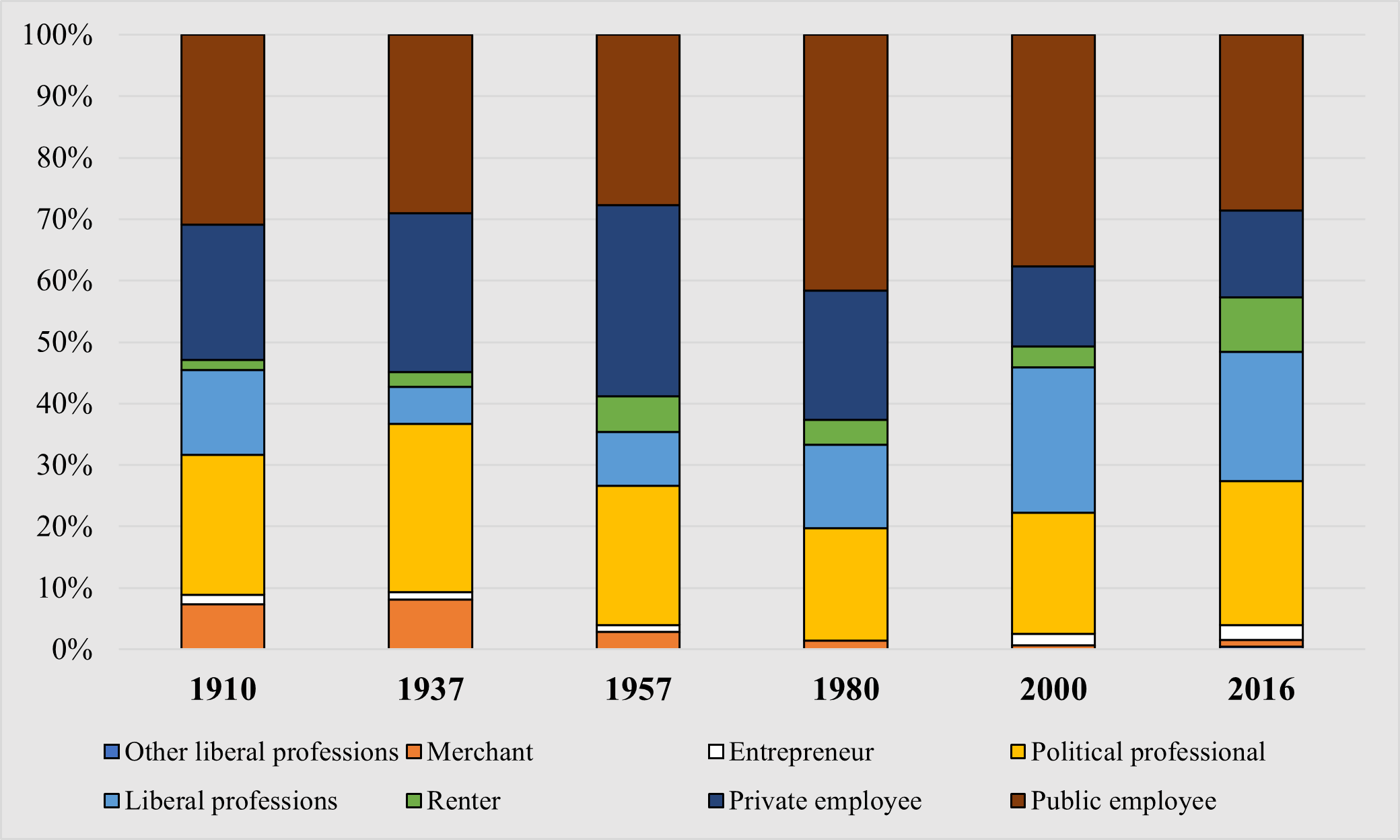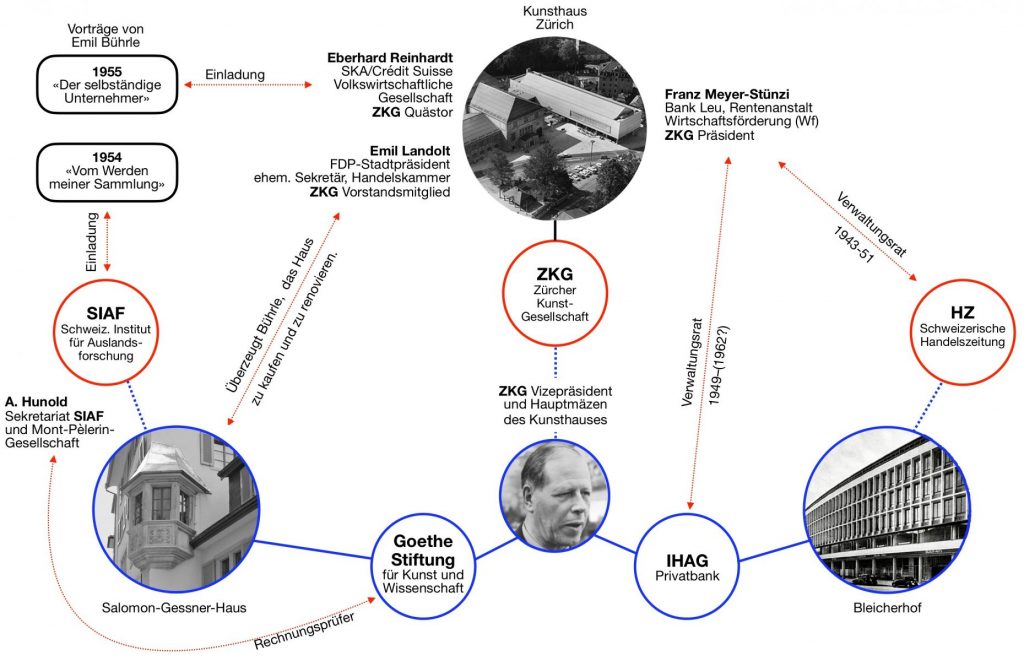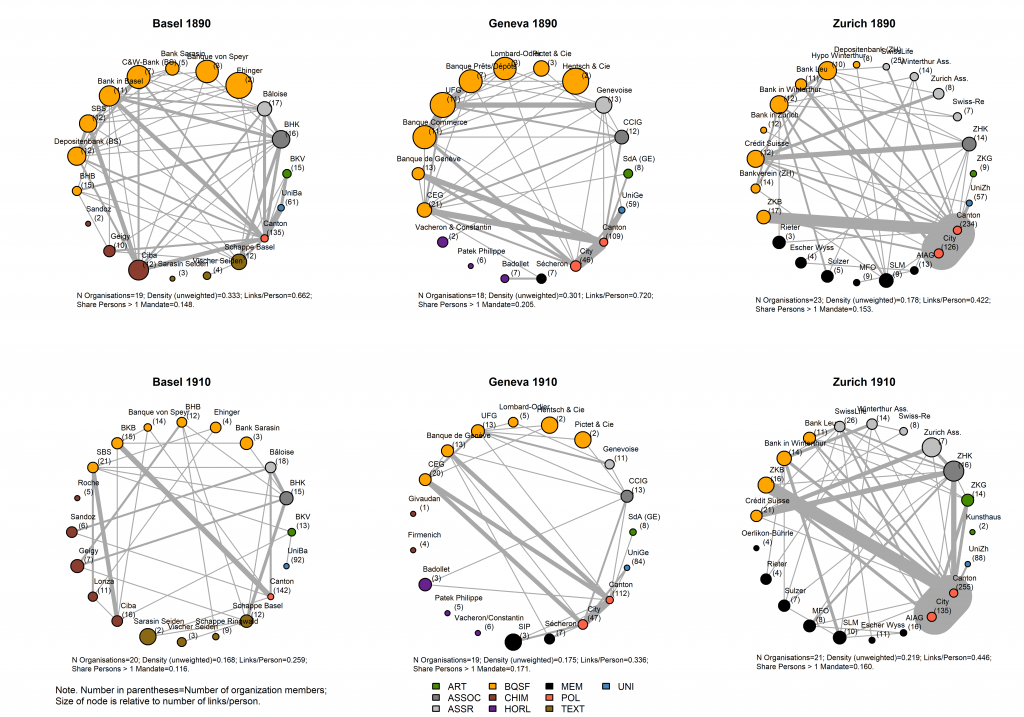This contribution was presented by Sinergia team members Émilie Widmer and Stéphanie Ginalski, together with Claire-Lise Debluë, at « The Key for Art Market Power » conference (online, 2-3 Nov 2020). Its aim is to tackle the issue of art market power through the lens of the Zürcher Kunstgesellschaft, the Zurich Art Society, which we consider a key – and yet largely overlooked – entity of the Swiss art market. More specifically, we analysed the power relations within the art society itself and investigated the weight of economic actors in the early 1930s – a critical moment for the internationalization of the Swiss art market (Guex 2011).
In 1932, Peter Meyer, editor of the well-known avant-garde journal Das Werk and a leading figure of the Swiss modern architecture movement, publicly condemned the increasing influence of members of the Zürcher Kunstgesellschaft (ZKG) belonging to the financial elite. According to Meyer, the latest general assembly of the ZKG had witnessed a genuine coup d’état staged by fellow members, who managed to amend the statutes of the society and to change the voting rules. This coup d’état was carried out by close collaborators of the executive committee’s president, Adolf Jöhr, who was also the general-director of the Swiss Bank Schweizerische Kreditanstalt. These collaborators were bankers, clerks, and legal consultants working in the financial field, and were described by Meyer as “financial praetorians”.
How come bankers and fellow legal consultants belonging to the financial elite gained such widespread influence within the ZKG? What does it tell us about the power structure of the artistic field and the pivotal role of certain intermediaries in the organization of the local and international art market? To answer these questions, we addressed the two-following issues. First, considering power struggles within fine art societies is crucial to assess the weight of each group of actors in the process of decision making. Based on the knowledge we have of the ZKG’s early history, we assume that fine art societies offer key sites for observing local elites’ divisions (including, but not limited to, artistic issues), while considering how and to what extent they agreed to adjust their mutual interests to shared goals. Second, drawing on Luc Boltanski (1973) notion of “multipositionality”, we took a close look at the variety of positions held by the ZKG executive committee members within the social field. More particularly, we sought to determine how “multipositionality” of financial elites (both inside and outside the ZKG) shaped the power balance between different categories of members and membership and how it affected the process of decision-making. The analysis focuses on the “Jöhr period” (1922-1940) and is based on the annual reports of the ZKG as well as on unpublished archival records.



